When it comes to off-roading, nothing connects you to the trail more literally than your tires. They are the only point of contact between your rig and the ground, and choosing the right set is one of the most critical decisions an off-roader can make. At VAOffRoad.org, we’re all about helping off-roaders—new and seasoned—make smart, informed decisions to maximize both performance and safety on Virginia’s rugged backroads and trails.
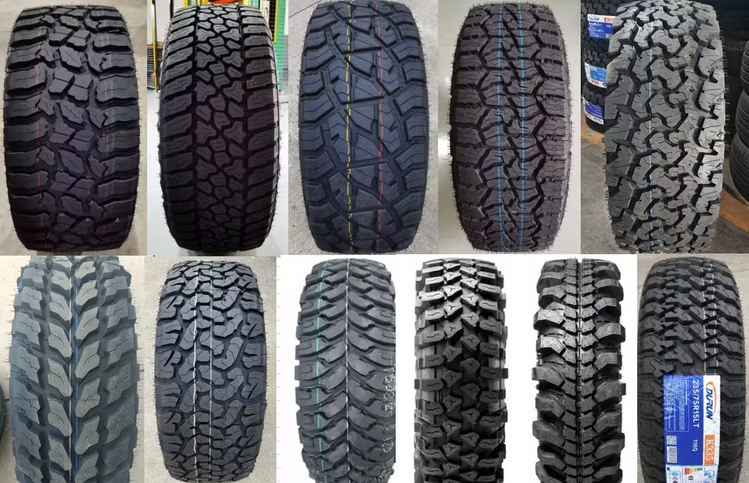
Whether you’re crawling over rocks, splashing through muddy hollows, or grinding your way up a snow-covered forest road, your tires can be the difference between a successful adventure and a trail nightmare. In this guide, we’ll explore why off-road tires are so important, outline popular types of tires, discuss whether upsizing is really necessary, and cover the essential modifications you’ll need if you decide to go bigger.
Why Off-Road Tires Are Critical for Trail Performance
Off-roading puts an extraordinary amount of stress on your vehicle—more than what any standard street tire is designed to handle. While your stock tires may work fine on paved roads and light gravel, they simply won’t cut it when you hit loose rocks, deep ruts, slick mud, or steep grades.
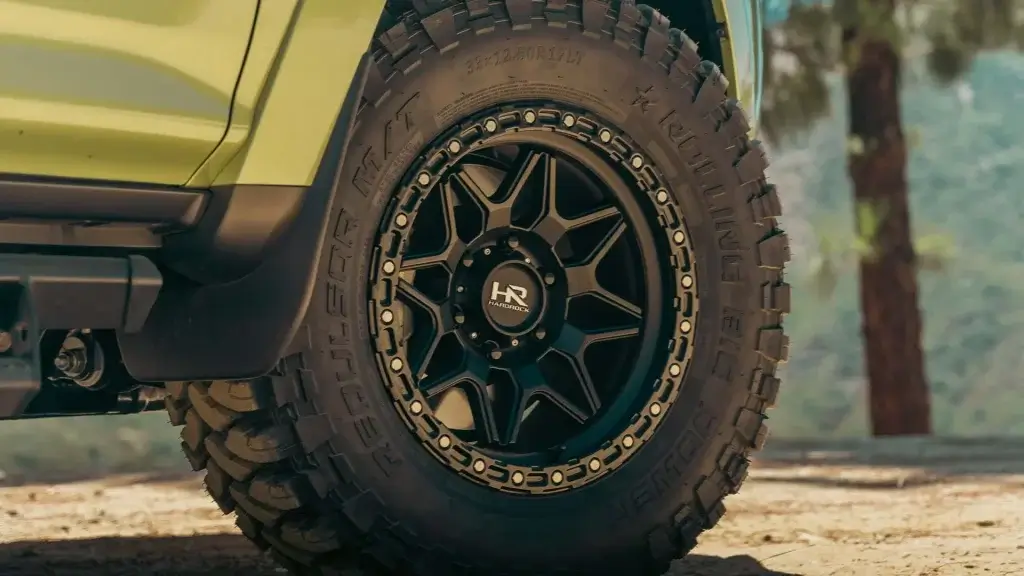
Here’s why dedicated off-road tires are crucial:
1. Traction
Different terrains demand different kinds of grip. Off-road tires are engineered with aggressive tread patterns that bite into loose surfaces, giving you the traction needed to maintain control and momentum.
2. Durability
Off-road tires are built tougher. Their sidewalls are reinforced to resist punctures from sharp rocks, tree roots, and other trail hazards. Most also feature thicker rubber and protective tread designs to stand up to the punishment of trail riding.
3. Self-Cleaning
Mud and snow can quickly clog the tread of a street tire, turning it into a slick. Off-road tires are designed with wider voids between tread blocks that fling mud and debris away, maintaining traction in sticky situations.
4. Air-Down Capability
Lowering tire pressure (airing down) increases the tire’s footprint and improves traction. Off-road tires handle this process better, offering greater flexibility and strength to prevent bead separation or sidewall damage.
Popular Types of Off-Road Tires
Not all off-road tires are created equal. Choosing the right type depends on how and where you plan to drive. Here are the main categories:
1. All-Terrain (A/T) Tires
All-terrain tires are a balanced option for those who split their time between pavement and trail. They offer moderate off-road performance while remaining relatively quiet and comfortable on-road.
Best for: Daily drivers who off-road occasionally
Pros: Quiet ride, decent traction, long lifespan
Cons: Not ideal for extreme off-road conditions
2. Mud-Terrain (M/T) Tires
Designed for the dirtiest work, mud-terrain tires have large, deep tread blocks and wide voids for superior grip in mud, rocks, and sand.
Best for: Frequent trail users, rock crawlers, mud boggers
Pros: Aggressive traction, strong sidewalls
Cons: Noisy, reduced tread life on pavement, poorer fuel economy
3. Hybrid Terrain (R/T) Tires
These are a newer breed combining the best of A/T and M/T. Rugged Terrain (R/T) tires bridge the gap between daily comfort and weekend warrior capability.
Best for: Daily drivers who need strong off-road performance
Pros: Balanced noise and traction, strong sidewalls
Cons: Slightly more expensive, middle-ground performance
4. Snow/Rock Specific Tires
Some tire models are designed specifically for snow or rocky terrain. They often include siping for ice grip or extreme sidewall lugs for rock crawling.
Best for: Niche off-roaders in specific regions (like the Blue Ridge during winter)
Pros: Exceptional performance in their niche
Cons: Limited use outside of specific conditions
Popular Brands to Consider:
- BFGoodrich KO2 (A/T)
- Goodyear Wrangler Duratrac (A/T/R/T)
- Toyo Open Country M/T
- Nitto Trail Grappler (M/T)
- Falken Wildpeak A/T3W
- Maxxis Razr MT
- General Grabber X3
Do You Really Need Bigger Tires?
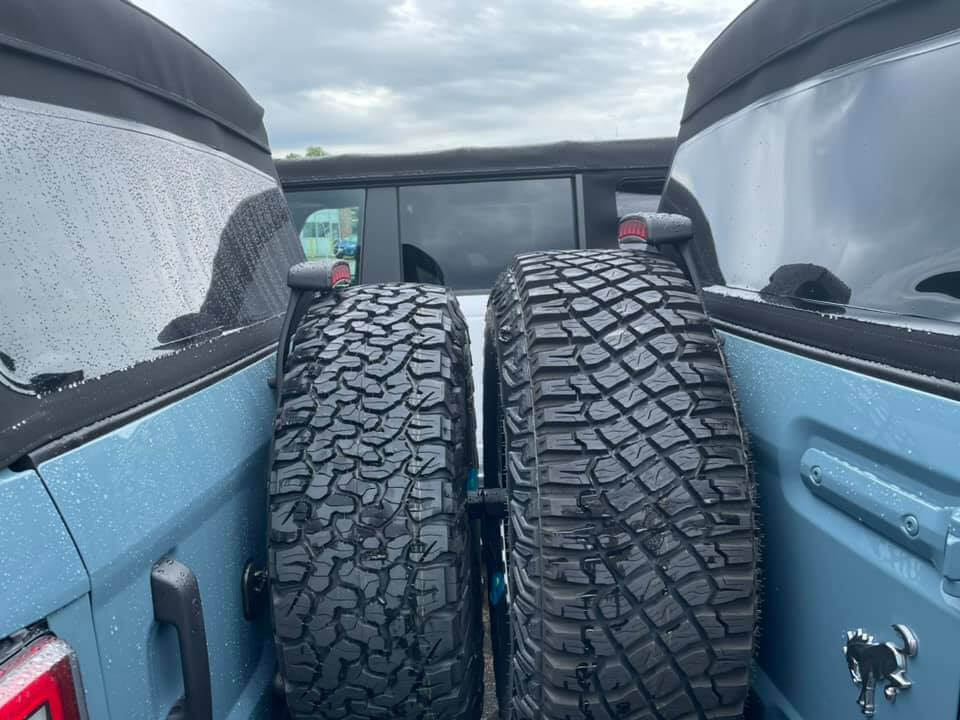
It’s no secret: bigger tires look cooler. But do you really need them?
The short answer: it depends.
If your trail time includes serious rock crawling, deep mud, or snow-packed backcountry, larger tires provide more ground clearance and a bigger footprint—both of which increase performance and safety. However, bigger tires come with trade-offs.
Let’s break down the pros and cons of upsizing your tires.
Pros:
- Increased Ground Clearance: Bigger tires raise your vehicle’s belly, reducing the risk of bottoming out on obstacles.
- Larger Contact Patch: More rubber on the ground = better traction.
- Improved Approach/Departure Angles: Especially helpful in rock crawling and steep descents.
- Better Trail Presence: Sometimes you just need more bite to muscle through tough terrain.
Cons:
- Increased Fuel Consumption: Bigger tires weigh more and increase rolling resistance.
- Slower Acceleration: Your drivetrain has to work harder to spin the larger mass.
- Stress on Components: Axles, transmission, and suspension parts may wear faster.
- Speedometer Inaccuracy: Larger tires throw off your speed and mileage readings.
If You Upgrade Tire Size, Here’s What to Modify
Going from stock to 33s, 35s, or even 37s isn’t just a bolt-on upgrade—it’s a full system transformation. To avoid poor handling, damage, or unsafe trail conditions, you’ll need to address a few key areas of your rig.
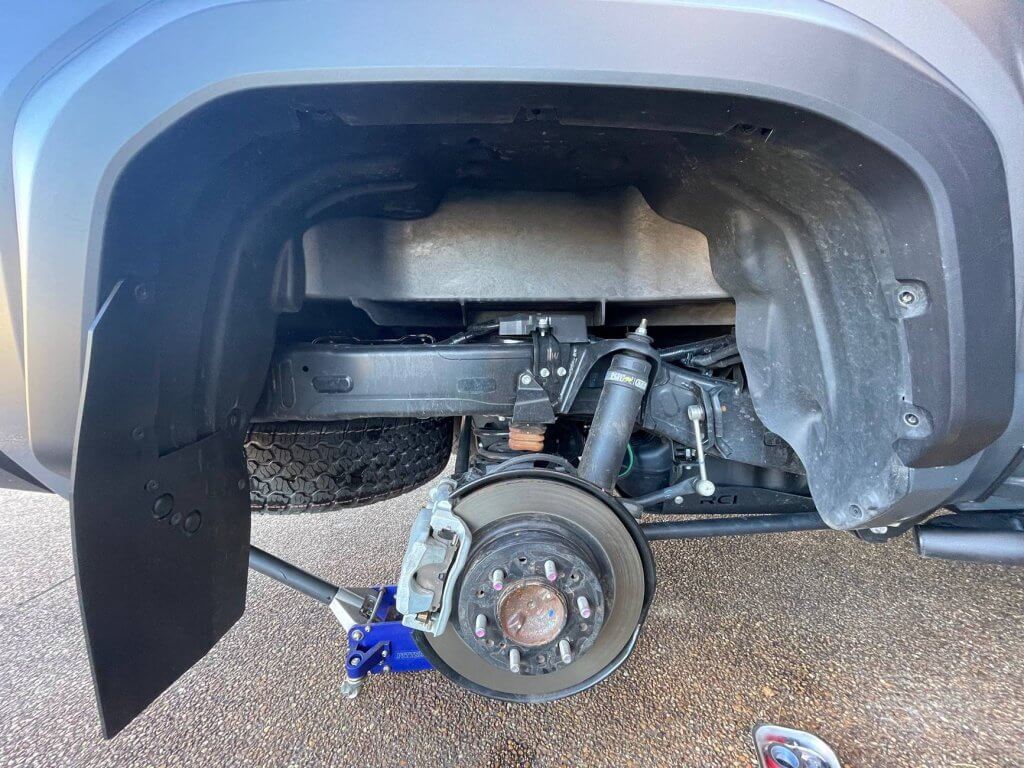
1. Suspension Lift
You’ll likely need a lift to accommodate larger tires. A basic leveling kit might suffice for 33s, but 35s or bigger usually require a 2.5″–4″ lift. Be sure to match the lift to your tire size and keep in mind your center of gravity will change.
2. Gearing
Larger tires can throw off your axle gear ratio, making your vehicle sluggish and causing transmission strain. Regearing your axles restores lost power and efficiency. For example, going to 35s may require moving from 3.73 gears to 4.88s, depending on your rig.
3. Fender Trimming
Bigger tires mean more bulk. In some cases, you’ll need to trim fenders or add aftermarket flares to avoid rubbing during suspension articulation or turns.
4. Brakes
Heavier tires require more stopping power. Upgrading to larger rotors, stronger calipers, or performance pads may be necessary for safety.
5. Steering Stabilizer & Components
Upsized tires put stress on your steering system. Consider a beefier steering stabilizer, tie rods, and drag link to maintain control and prevent wear.
6. Driveline and Axles
High torque loads can break stock axles or driveshafts—especially with tires 35″ and above. Upgrade to chromoly shafts or beefier U-joints as needed.
7. Recalibrate Speedometer
Use a tuner or calibration tool to reset your vehicle’s speedometer and shift points to account for your new tire diameter.
Trail-Ready, Not Just Trail-Looking
At VAOffRoad.org, we’ve seen plenty of rigs that look ready for the trail but aren’t built to withstand what the terrain throws at them. Bigger tires without the right supporting mods can lead to mechanical breakdowns—or worse, off-road recovery situations that could have been avoided.
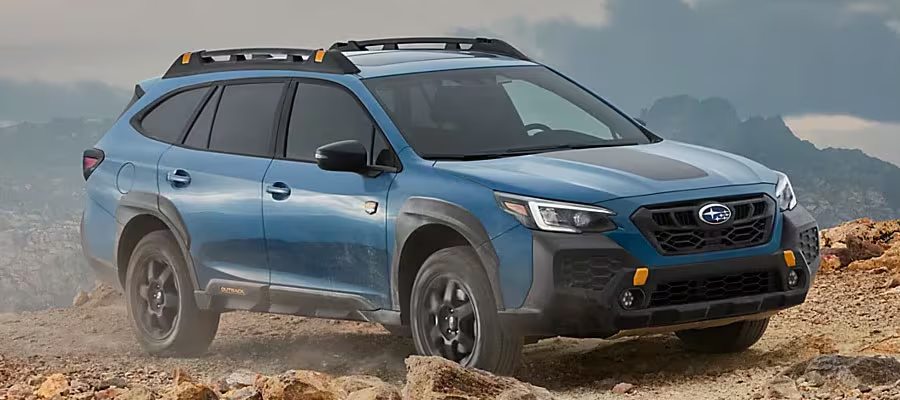
Always remember: function over form.
If you’re unsure whether you’re ready to upsize, start small. A well-built rig on 33s with lockers and a solid suspension setup will outperform a 37” monster with stock gearing and no articulation. Know your rig. Know your trails. Build accordingly.
Final Thoughts
Choosing the right off-road tires is a foundational decision that impacts everything else about your build. Whether you’re wheeling on the rocky trails of Peters Mill Run or navigating the muddy cuts near Shoe Creek, your tires are your first line of defense and performance.
Investing in quality tires—and upgrading responsibly—isn’t just smart. It’s essential.
At VAOffRoad.org, we’re committed to helping off-roaders throughout Virginia make educated, trail-proven decisions. Whether you’re learning the ropes or upgrading to your dream build, start with your tires—and build up from there.



No responses yet